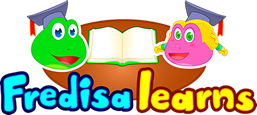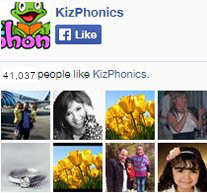An Independent Expert Review of the Kiz Phonics Programme
Read what other experts are saying about the Kiz Phonics Programme
Review of the Kiz Phonics Programme by Mark Lewis BA, HDip TEFL (Former Foreign Team Facilitator for Doctor Phonics’ English Academy Japan & Director of Studies for English First & International House)
In order to appreciate the importance of phonics in English language education it is necessary to fully understand what phonics actually is. Many people often confuse phonics with phonetics so first of all we need to clearly define these terms. Phonetics is the study of speech sounds in a language and is focused purely on pronunciation. Phonics is a method of learning to read English by developing an awareness of the variety of sounds that letters represent in different positions and combinations. Therefore, although phonics deals with the sounds of English, it is primarily focused on literacy.
The two main methods of learning to read English are by means of word recognition and phonics. The more traditional method of learning via word recognition tries to develop literacy by getting learners to recognise whole words and their sounds. There are two problems with this method. Firstly, it only promotes an ability to read words that have already been presented to learners and I have often come across cases where very advanced level students have been unable to even attempt to read a new word aloud simply because they have never encountered it before and have no real concept of the way that English letters in different combinations actually sound. Secondly, word recognition is extremely problematic when dealing with learners who have reading difficulties such as dyslexia.
In contrast, phonics allows learners to build and apply an understanding of the patterns of sounds that letters represent, enabling them to develop the ability to read new words for themselves. It is rather like the old proverb that states if you give a man a fish, you can feed him for a day but if you teach him how to fish, he can feed himself for life. The phonics method has been widely used to develop literacy amongst native speakers as well as learners of English and in my experience is particularly useful for learners whose native language does not use the Roman alphabet.
In terms of courses for learners of English as a second or foreign language, elements of phonics have been incorporated into many children’s text books, in particular David Paul’s young learners’ courses. Full programmes such as the Matsuka Phonics Institute series in Japan have also been developed. However, these programmes have generally been quite limited, generally only providing basic introductions , skeleton courses with large omissions or simply not going far enough in terms of producing a comprehensive phonics literacy programme.
The Kiz Phonics programme seems to have remedied this situation by providing an intensive, structured and comprehensive programme, covering the full scope of phonics education that is accessible to young and very young learners with a wide range of engaging practice activities for learning reinforcement.
I am personally very pleased to finally see a course like this and feel that it will not only be very useful to individual learners studying online but also for schools and language training centres around the world.
Independent Review by Highly Experienced US Teacher
Here is what a phonics teacher with 45 years of teaching experience in the USA had to say about the pros and cons of Kiz Phonics.
KizPhonics advertises itself as a Pre-K to 2nd grade site for teaching phonics, but I’ve been using it with a few third and fourth graders who have weak phonics skills. This site is HUGE, with online and printable resources, as well as phonics programs with books and CDs that are available to purchase.
If you are uncertain about a scope and sequence for teaching phonics, this site is for you. The lessons and materials are leveled by grade: pre-kindergarten, kindergarten levels 1 and level 2, first grade levels 1 and 2, and second grade levels 1 and 2. There are assessments for each level, scoring sheets, progress report sheets, and certificates for students. A subscription to KizPhonics also includes lesson plans for teaching each level, with pacing guides and links to resources on the site. To give you an idea of the numerous resources, for each specific letter-sound association in English (including digraphs), there are paper and online books, worksheets, videos, games, songs, PowerPoint presentations, and practice activities. The skills start with letter identification and advance through r-controlled vowels and vowel diphthongs such as au and oi. The site has been updated in recent months with online team board games and phonics songs that accompany worksheets. Listening activities are also coordinated with worksheets. Despite its phonics emphasis, KizPhonics provides materials for teaching sight words though board games, online matching games, and more. An entire section is dedicated to teaching formation of upper and lower case letters, where kids watch a video and then use a mouse to trace the lines. KizPhonics also sells an app (The Monkey Sentence Game), although there is a free “lite” version available. It’s an impressive website that is easily navigated though a simple menu system. The prices are VERY reasonable for a site with this much fire power.
Pros:
- The site has a massive number of resources available, all of which can be easily accessed.
- The materials are interesting enough for older students with delays in phonics skills. The monkey sentence game and online board games (with automated dice rolling) are highly engaging.
- All the voices are “real” and easy to understand.
- Both beginning and experienced teachers can make use of this site due to the great organization of materials. Each section has pointers for teachers, which would be helpful for newbies.
- The graphics are eye-catching and interesting.
- The assessments are good and match the skills being taught.
- The price is unbeatable.
Cons:
- The phonics songs are a bit cheesy but hey, they set each song to a different melody and beat. FIX: Try to imagine how you could do better!
- Every game and feature is marked by grade level, so older kids could feel self-conscious. FIX: Turn the computer away or block the screen while you load the activity.
- Every activity is also clearly marked to indicate what skill is being practiced. The more astute kids can figure out what words they should look for by referring to the name of the activity. FIX: Turn the computer away or block the screen while you load the activity.
Teachezwell Blog
Testimonials
I am looking to run literacy classes for young pre-school children and am seeking a reputable and effective phonics-based system to use as the foundation of my classes. Your materials and website look excellent (and I am also reviewing Jolly Phonics and Letterland)...
I have gone through your product. It is an excellent product. Everything is well prepared and in sequence. Do you have any authorized agent or distributor in Kuwait?
These are the best. I absolutely Love these PPTs. There are right on point, very engaging, and colorful.
Thank you for all the materials you've been sharing. They're so helpful and lessen the workload of teachers. Keep sharing and giving.
Salute!
I really find your resources very beneficial, especially during this pandemic. My 4-year old toddler has benefitted tremendously. Thank you!
Congratulations and thanks for this good work.
Excellent material for teaching phonics.Thanks alot.
Thank you for the games and material. It's been quite useful for my 1st graders.



